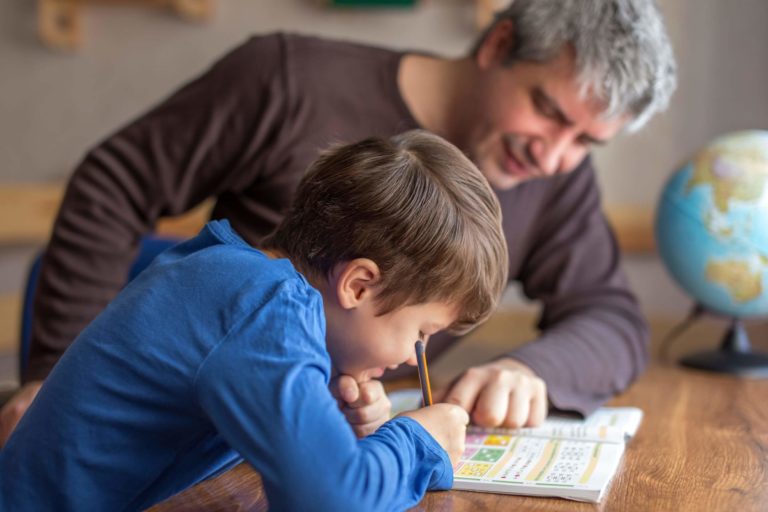Parents are teaching their children from home; some are doing so voluntarily, like those who homeschool their children throughout the year, and some are solicited to teach by circumstances, like those facing school closures due to the COVID-19 pandemic. Teaching from home is a feat that brings a plethora of emotions like stress and anxiety, especially for parents who are new to teaching.
Six proven tips can allay the anxieties and stress and make way for physical and emotional control so parents and students succeed on their journey of teaching and learning from home.
Establish a Dedicated Learning Space
Do you as a parent have a special place for meditating, working from home, reading, watching your favorite Netflix series, sleeping, etc.? How do you feel when you step into that space? You probably feel driven to engage in the named activity because the environment has become a trigger for the particular habits that often occur there. You can foster work and learning habits in your child by having your child use a dedicated space for learning. For a learning space that is most appropriate, make the space comfortable, eliminate distractions, and provide the required learning tools.
The optimal learning space is one that is flexible and comfortable for your child. Does your child like to lie down or sit up to work? What temperature and lighting are favored by your child? Having choices within the space makes the space flexible for your child, which is motivational and comforting. A learning rug, sofa, child-sized desk, and/or s table are pieces of furniture to consider when creating your child’s learning space. Also, your child may be most comfortable with a blanket, a fan, bright and dim lights, a variety of lamps, etc. that will allow him or her to adjust the space as needed or desired.
Maximizing the space and time for learning requires eliminating distractions. Some typical distractions include television, gadgets, toys, clutter, various extreme colors in one space, etc. Remove or unplug any distractions to increase your child’s focus and learning.
Having learning tools readily available in the dedicated space will decrease time spent searching for the tools and will maximize learning time. Provide appropriate learning tools such as pens, pencils, appropriate technology, paper, required books, learning games, or other required materials.
With a dedicated learning space, your child will begin to associate work and learning with this area and learning time will be maximized.
Establish a Routine that Works
Children’s emotional control, choices of behavior, and tendencies toward learning improve with a consistent routine or schedule. When creating a routine or schedule, it is important to “put pen to paper” because a routine needs to be clearly established and communicated. Start with big pieces of the day that are already in place such as mealtimes and bedtime. Then build other timeslots into the schedule like computer time, reading time, etc. A routine that works requires you to know your child. When does he/she focus best? This will be an optimal time for tasks requiring the most attention and deliberation. When is your child more sluggish? This time of day will be ideal for brain breaks, play, or activities that interest your child.
Once you’ve created a routine or schedule, post the schedule for all to see. Place it on the refrigerator, send it electronically, or use whatever method for communication that works for your child and your family. A routine promotes positive habits, decreases anxiety, and promotes security for children; learning is more likely to occur in these right conditions.
Check-in Frequently
“How do you feel? Tell me something new.” Doesn’t it feel good for someone to take such interest in your feelings, thoughts, and well-being? It feels good to children, too. Safety, security, and emotional well-being are reinforced through frequent check-ins, so ask your child questions regularly throughout each day.
Another purpose for frequent check-ins involves a correlation to the effective teaching-and-learning cycle. The cycle requires feedback or, simply stated, helping your child understand what he/she did right and what needs improvement or correction. Check your child’s work and talk with him/her about great efforts and about improvements needed.
Provide Ample Brain Breaks
Have you ever been in a meeting and had to excuse yourself for a drink of water so you could refocus? Children, like adults, need breaks too. Brain breaks are breaks from the task at hand and are essential for focus, concentration, processing information, and memory. Breaks may be brief, like stretching, or extended, like engaging in some type of physical activity. They can be scheduled or can occur after the completion of sets of activities or tasks. A scheduled break, for example, would be a 3 minute stretch break every 30 minutes of work. A break after completion of tasks, for example, would be a 10 minute break after all math problems have been completed.
Build in Time for Interests and Play
Play and engaging in personal interests yield benefits for children; they foster creativity, support children in processing the world around them, and increase motivation. Play can occur in a variety of ways and spaces. It can include toys, games, drawing, dancing, swinging, pretending, imagining, dreaming and discussing dreams, sharing, and the like. Personal interests may be involved daily in book choices, choices in games or music, research on chosen topics, etc. When the benefits of play and interests are facilitated in the lives of children at home, growing and learning are more likely to occur.
Encourage Challenging Work
Engaging only with easy tasks leads to stagnation in growth and learning. Instead, encourage children to take on a challenge. Challenges encourage risk-taking and require persistence to be accomplished; thus the fostering of real-world skills is at hand. Challenges become easier through repetition, and one graduates from one level to the next on the continuum of growth and learning.
Like teachers in classrooms, parents that teach from home want security and success in emotional and academic growth for their children. Teaching your child at home is not easy, but the six tips will guide you to a more successful journey in the charted or uncharted territory you are facing at home.




